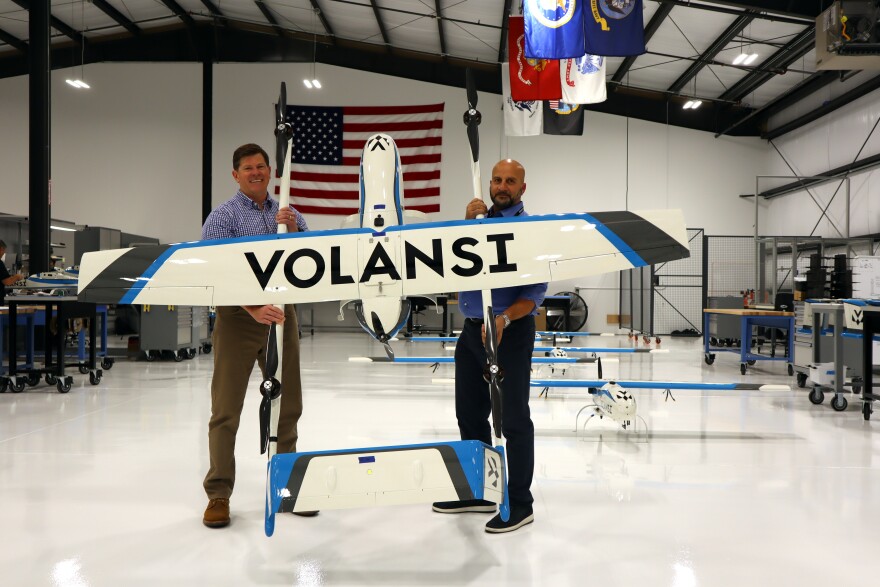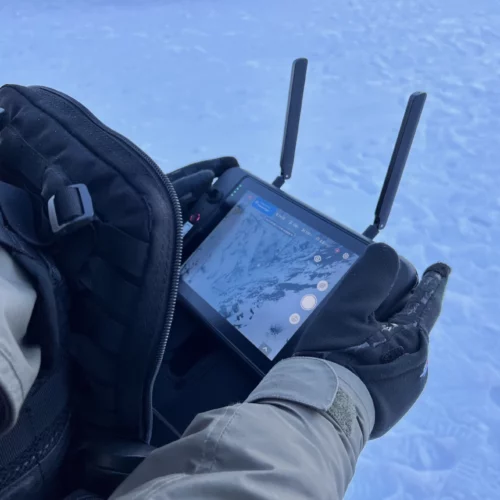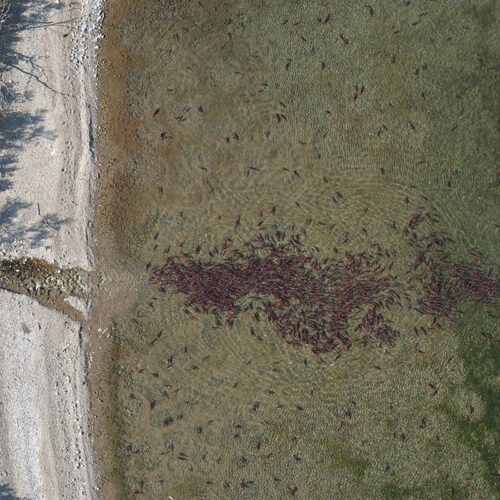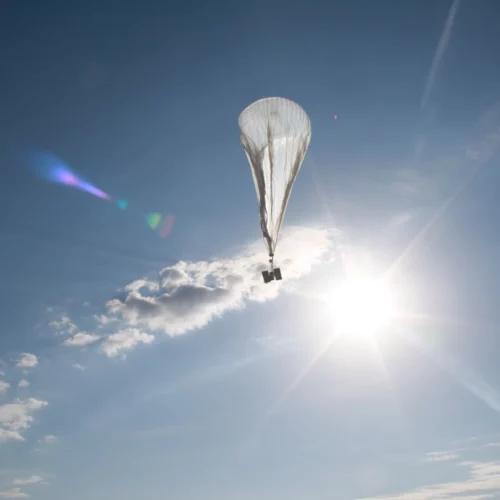
When Will Drone Delivery Be A Thing? Slow To Take Off, But Now Building In Bend
Listen
With all the news about supply chain problems, you might be wondering how to get your online purchases on time. If only the promised future of aerial delivery by drone could be realized during the upcoming holiday shopping season.
Sorry to burst your bubble. To quote the sci-fi writer William Gibson, “The future is already here — it’s just not very evenly distributed.”
A venture capital-backed startup has opened a factory in Bend, Oregon, to build delivery drones. But Volansi Inc.’s flying machines won’t bring gifts to you. They are focusing on high-margin, business-to-business use cases, such as delivery of spare parts and medicines.
Amazon founder and then-CEO Jeff Bezos planted the idea for drone delivery in a lot of consumers’ minds way back in 2013. That’s when Bezos went on CBS’s 60 Minutes to unveil his company’s prototype Prime Air drones. It created quite a buzz, and not just from the electric octocopter blades.
“I know this looks like science fiction. It’s not,” Bezos told correspondent Charlie Rose. “It drops your package; come and get your package. We can do half-hour delivery.”
Bezos predicted this capability could become reality by 2018-19, but that turned out to be too optimistic. Amazon has been fairly guarded about its drone development program and through a spokesperson Tuesday declined to give a current status update.
Other big companies such as Walmart, UPS, FedEx and Google parent Alphabet are wading into drone delivery too, but they are limited to early stage testing in the U.S. by still evolving regulations.
At the same time, investors are backing a whole bunch of startups with delivery drones. One of these, Volansi, opened an assembly line in Bend within the past year.
Vice President for Production and Maintenance Ahmad Ziada gave a rare peek onto the spotless manufacturing floor earlier this month.
“We build here between five to ten per month. Our capacity is ten because of the people we have, not because of anything else,” Ziada said of the growing Bend operation, which has hired about 45 workers.
Behind him gleamed an eye-catching row of all-electric, winged VOLY C10 autonomous aircraft. They clasp lunchbox-sized storage boxes under their bellies. Volansi’s medium-sized, vertical takeoff-and-landing drones can carry up to 10 pounds for as far as 50 miles.
Volansi also manufactures a larger, longer-range drone model at a facility near its San Francisco Bay area headquarters. The VOLY M20 can carry up to 20 pounds of cargo as well as a sensor payload. It has hybrid gas-electric propulsion.
As to the cost? “We’re still trying to figure that out,” Ziada said during a tour.
The small company won’t try to compete with e-commerce giants like Amazon or Walmart in delivering to households. VP for Global Operations Mike Jackson said Volansi is going after different markets. He mentioned cargo delivery for the military and shuttling spare parts for commercial customers in the construction, mining, and oil & gas fields. Delivering medicines or disaster relief supplies is another promising proposition.
“We’re not necessarily going into a neighborhood,” Jackson said. Instead, Volansi’s drones might fly from a factory or a warehouse to a construction site. “We’re going to solve and provide value on supply chain problems for our customers,” he said.
Jackson figured that business-to-business drone delivery will likely win approval sooner, would be easier to pull off and turn a profit quicker. This summer, Volansi demonstrated for the U.S. Navy and Coast Guard how it could move small cargoes between two moving ships at sea. A separate demonstration with the North Carolina Department of Transportation showed how its drones could deliver life-saving supplies to the Outer Banks after a disaster, such as a hurricane.
At this time, Volansi doesn’t have customers in the Pacific Northwest. So, why did the San Francisco-based company pick Bend for its factory?
Jackson said the selection criteria during a national search included talent availability, cost, proximity to potential suppliers and partners, favorable flying weather and quality of life for employees.
“Bend hits the mark on every single one of those,” Jackson said.
As for when the average consumer can order dinner or presents and have the purchase swiftly delivered by drone, “it’s going to be a while yet,” according to Patrick Sherman, a Portland-based instructor and drone pilot with Embry-Riddle Aeronautical University.
“I am certainly not going to say we will never have a Christmas gift delivered at 11:59 p.m. on Christmas Eve by a drone, but that is about the most challenging sort of operation you could ever hope to complete with a drone,” Sherman said. “There’s so much between the takeoff point to how it gets to your property. What if your property is surrounded by tall trees? There are just so many problems.”
Sherman said the low altitude air traffic control needed for delivery drones to fly safely is getting a lot of attention, but is “far from solved at this point.” Public acceptance is still an unknown. Regulators also need to certify the new aircraft and it would help to define drone corridors in the sky to reduce conflicts.
Sherman and Jackson presented earlier this month about industry developments at a drone conference in Bend put on by the Association of Unmanned Vehicle Systems International Cascade Chapter.
Also at the conference, Olivier Defawe, director of health systems at the Seattle-based global health nonprofit VillageReach, described how Africa is serving as a proving ground and early adopter of cargo drones. He said his nonprofit partnered with several different drone companies to show how “2-way drone delivery” could overcome logistical challenges of delivering perishable vaccines to remote villages and returning to a central office with lab samples.
Defawe said VillageReach, with outside sponsorship, had supported vaccination campaigns and blood and medicine delivery trials in the Democratic Republic of Congo, Central African Republic, Malawi, Mozambique and the Dominican Republic. He said a barrier to wider adoption of drone delivery was the “big, black box” of whether the cost per flight will be affordable in the developing world. A cost study that VillageReach is involved in is slated to publish next March.
“It’s a long journey to sustained operation,” Defawe concluded.
Related Stories:

Drone skills 101: Special forces train for Ukraine in Methow Valley
It’s been more than a year since Russia invaded Ukraine. Thousands of fighters and civilians have died. With no clear end in sight, Ukrainian forces are taking all the help they can get – including from surveillance drone pilots, trained in Washington’s Methow Valley.

Drones could help researchers count salmon nests
A drone image of salmon during spawning season in Alaska. CREDIT: Daniel Auerbach LISTEN READ Searching for the places where salmon lay eggs, known as redds, is getting a boost

Up, Up And Away. Forest Service Looking At Special Balloons To Monitor Big Wildfires
The U.S. Forest Service is looking at something different — very different — to improve situational awareness at big wildfires: high altitude balloons.















